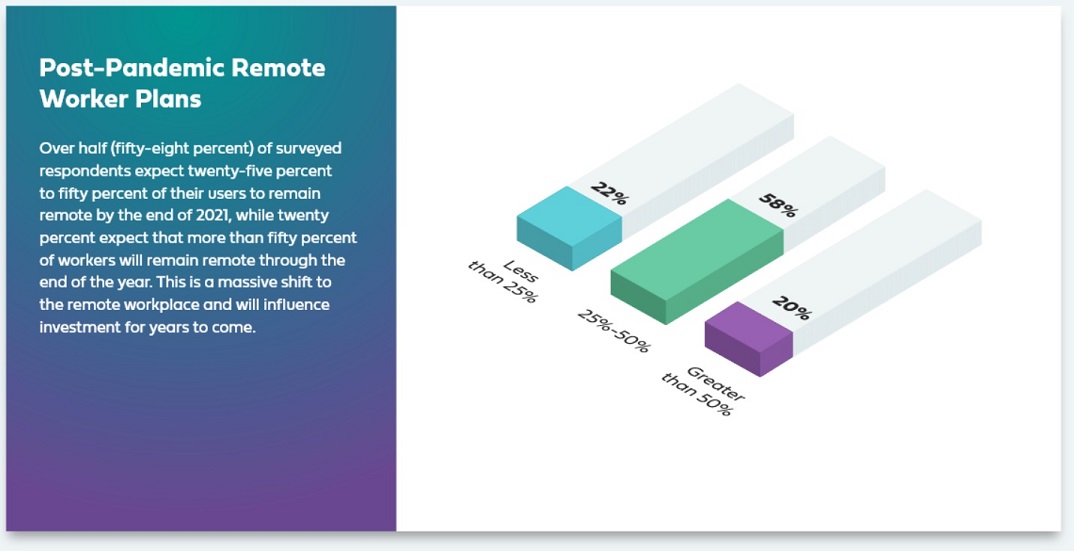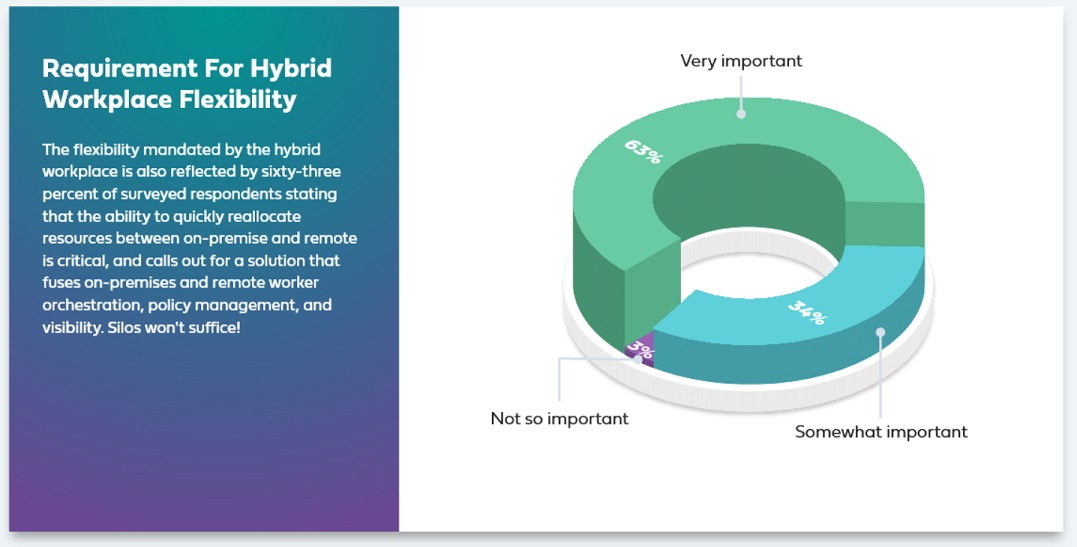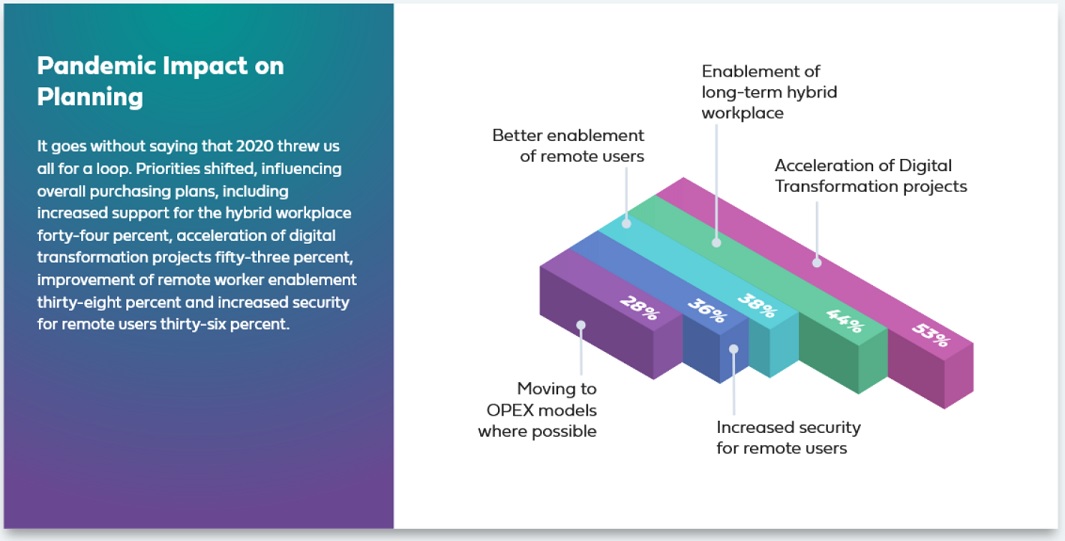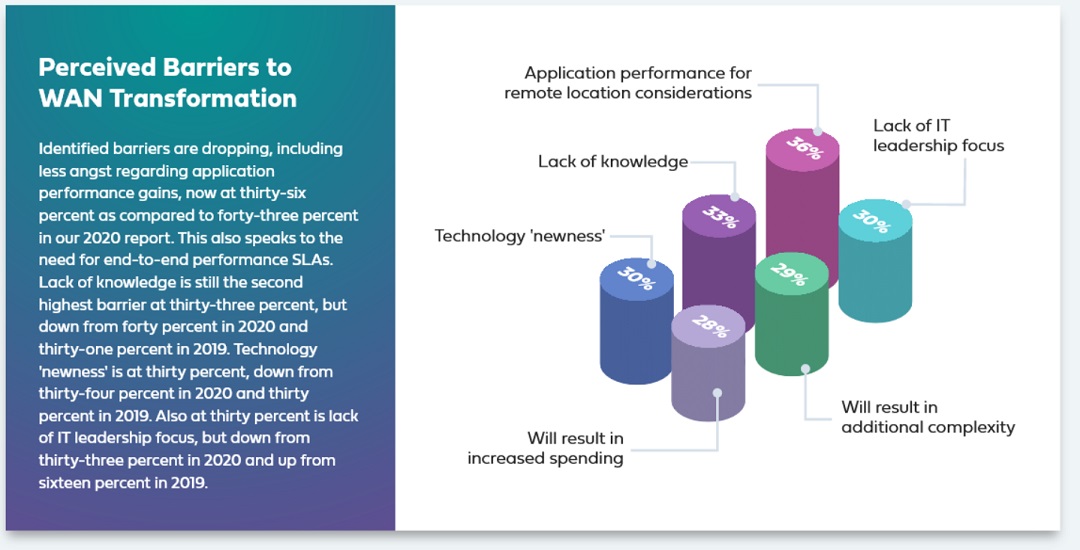A hybrid work environment will persist after the pandemic recedes, with over 80% stating that they expect over a quarter of workers to remain remote, and over two-thirds desiring flexibility between on-premises and remote deployments according to the 2021 State of the WAN report released by Aryaka.
When the pandemic hit, workers around the world migrated from their offices to their homes, a shift that will also impact future planning and investment throughout 2021. More than half (59%) of the respondents stated they expect 25-50% of their workers to remain remote, while 21% say they are planning for more than 50% of their workforce to continue working from home.

Businesses are also prioritizing flexibility, with 63% stating that they consider the ability to quickly move resources between on-premises and remote to be very important.

Other key trends identified in this year's report include:
■ Continued WAN and application growth, resulting in increased network complexity. The number of enterprises reporting they're deploying over 500 distinct applications has grown to 46%. 37% of enterprises identify complexity as their number one network concern
■ 43% of enterprises identify application performance as an underlying driver for WAN transformation. However, WAN transformations have slowed this year due to the pandemic
■ Over 70% of enterprises intend to move to managed services versus just 18% who prefer the autonomy of a do-it-yourself WAN solution
■ Accelerating fusion of networking and security planning, with almost a third of enterprises stating that they are already deploying what they consider to be a secure access service edge (SASE) architecture

The WAN continues to extend its reach, with the number of enterprises connecting to over 100 inter-regional sites growing by 50%, from 19% in 2020 to 28% in 2021. This is coupled with continued application growth, with the number of enterprises stating that they've deployed over 500 distinct applications growing to 46%, compared to 32% in 2021. As evidence of collaboration traction, Zoom was identified as critical by 36% in 2021, up from 25% in 2020.
One finding that did not noticeably change year-on-year is complexity, which was identified by 36% of enterprises as their number one network issue.
Interestingly, those who identified cost as a major issue grew to 20% in 2021 from 16% in 2020, a 25% increase. This may be attributed to cloud or MPLS cost concerns.
Overall, investment priorities did see recede in some areas, due to tactical pandemic concerns driving near-term planning. For example, only 17% of respondents plan to conduct an SD-WAN/SASE-driven network refresh this year versus 29% in 2020. However, combining this with remote access upgrades, a new entry at 22%, and security, at 21%, results in strong momentum going into 2021. In contrast, LTE/5G experienced growth from 24% in 2020 to 31% in 2021. Finally, VPN investment is at 31% this year versus 27% in 2020. Aryaka believes the new remote workforce, due to the pandemic, led to this VPN increase.
For actual deployment, managed services still reign supreme at 71%, versus 18% who are looking for a do-it-yourself (DIY) solution.
Many enterprises are also further along the deployment lifecycle, with 26% evaluating SD-WAN this year, up from 22% in 2020. This increasing market maturity is reflected in a drop in identified barriers to SD-WAN adoption.
Enterprises are less concerned that the WAN service won't address application performance, coming in at 36% this year, versus 43% in 2020, with corresponding drops in SLA concerns, technology maturity, and lack of skills.

Methodology: The 2021 State of the WAN study surveyed over 1350 global IT and network practitioners at enterprises spanning all verticals, headquartered in NA, APAC and EMEA.
